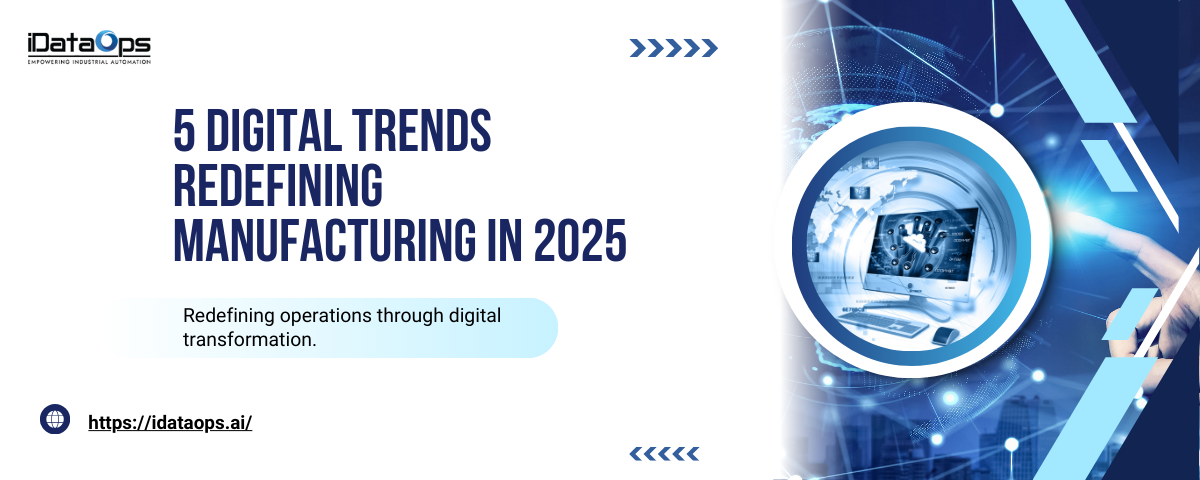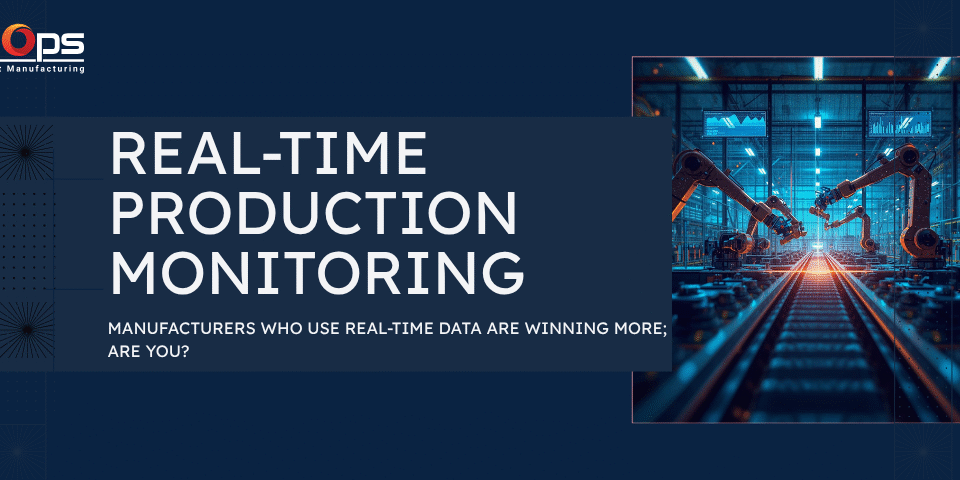
Edge Computing and IoT: The Dynamic Duo Transforming Manufacturing Operations in Industry 4.0
April 21, 2025
Industrial DataOps: The Backbone of AI-Driven Smart Manufacturing in 2025
May 19, 20252025 Outlook: 5 Digital Transformation Trends in Manufacturing You Can’t Ignore
If you work in manufacturing, you’re already familiar with the term “digital transformation.” It’s been around for years. But here’s what’s different in 2025: it’s no longer something being discussed in strategy meetings—it’s now part of day-to-day operations.
Plants are getting smarter, data is flowing faster, and decisions that once took hours now happen in real time. The technologies aren’t necessarily new, but the way they’re being used is changing—fast.
Here are five key trends shaping the digital transformation of manufacturing in 2025—and why they matter now more than ever.
1. Predictive Maintenance Is Becoming Practical
Predictive maintenance used to be a buzzword—something that sounded great but rarely delivered at scale. That’s changing.
More plants are now running with connected sensors, edge devices, and AI models that monitor equipment health in real time. These systems don’t just alert you when something breaks—they flag unusual patterns before a failure happens. That means teams can plan maintenance around operations, not the other way around.
Why it matters:
-
Reduced downtime
-
Longer equipment life
-
Smarter use of parts and labor
Predictive maintenance is no longer just a pilot—it’s becoming part of daily production strategy.
2. Smart Factories Are Scaling Up
“Smart factory” used to mean a single pilot project. In 2025, manufacturers are scaling those ideas across entire facilities—or even global operations.
What this looks like:
-
Real-time dashboards and production analytics
-
Digital twins for simulation and testing
-
AI-optimized machine settings for efficiency and quality
It’s not about ripping and replacing every system. It’s about stitching together what already exists, and using data to make it smarter.
3. Sustainability Is Driving Operational Decisions
Sustainability has moved from corporate mission statements into real-time manufacturing choices. Carbon tracking, energy usage, and material waste are now measurable and tied to KPIs.
How manufacturers are responding:
-
Using digital tools to monitor energy and emissions
-
Automating material and waste tracking
-
Feeding sustainability data into planning processes
The pressure is real—but so are the operational benefits when sustainability is treated as a design constraint, not an afterthought.
4. Cloud-Connected Systems Are Quietly Transforming the Shop Floor
Cloud adoption may not be flashy, but it’s foundational to many of the other changes happening in manufacturing. It enables faster collaboration, real-time visibility, and scalable software deployment.
Examples on the floor:
-
Engineers accessing shared data across plants
-
Real-time supplier integration
-
Automatic software updates with minimal disruption
It’s not about being “cloud-first.” It’s about being cloud-capable—connecting systems in ways that make decisions faster and more accurate.
5. The Workforce Is Being Augmented, Not Replaced
With experienced workers retiring and hiring pipelines tightening, manufacturers are looking to digital tools to help people work smarter—not replace them.
What’s working:
-
AR for real-time troubleshooting and training
-
AI-based guidance systems for newer workers
-
Digital work instructions instead of paper binders
These tools reduce ramp-up time, minimize errors, and help operators solve problems without waiting on support.
Final Thoughts: Making It Work Over Making It Flashy
The most important thing to remember? The companies leading digital transformation in 2025 aren’t chasing buzzwords. They’re focused on getting things to work—across systems, across teams, and across time zones.
They’re:
-
Connecting what they have, not always buying new
-
Investing in clean, usable data
-
Prioritizing human decision-making, supported by automation
In manufacturing, progress often comes from small wins that scale. And in 2025, those wins are being powered by digital infrastructure that works behind the scenes to keep factories efficient, sustainable, and resilient.



